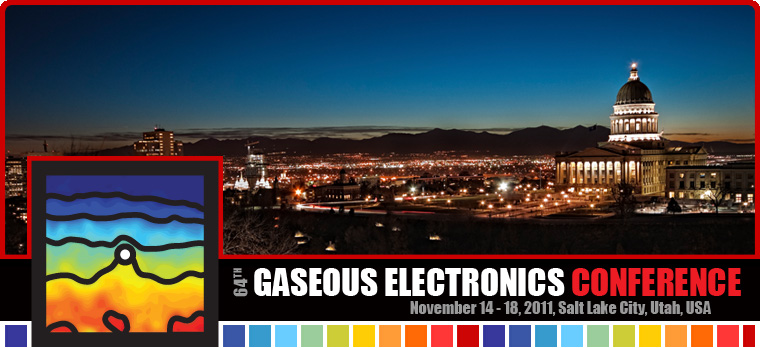ABSTRACT SUBMISSION
The deadline for receipt of abstracts is 5:00 pm US Eastern Daylight Time on July 15, 2011.
Contributed papers may be given orally in a 15-minute timeslot (12 minutes for presentation and 3 minutes for questions) or as a poster. For either mode, authors must submit an abstract, which briefly but accurately describes the new scientific work.
Contributors must submit abstracts using the American Physical Society online web submission process. Submission process is now open.
To submit an abstract, you will need to have available (1) the GEC sorting category code for the abstract (see below), (2) the number and ordering of authors and collaborators, and (3) the abstract content. The website will ask you for an American Physical Society membership number; but you can just type "GEC abstract" in the member id box if you are not an APS member.
The web page will guide you through the submission process. We strongly suggest that you proof-read your formatted abstract before submission. This is done by logging onto http://abs.aps.org/ and selecting the meeting "TEST." When you are ready to submit your abstract, select the GEC2011 meeting button, and a form will be created for you. Simply input your information as requested. If you encounter problems at any point in the abstract submission process, please contact the APS Abstract Help-Line abs-help@aps.org or call (301)209-3290 during regular business hours, US Daylight Eastern Time.
1. Atomic and Molecular Processes
| 1.1 | Electron and photon collisions with atoms and molecules: excitation |
| 1.2 | Electron and photon collisions with atoms and molecules: ionization |
| 1.3 | Heavy particle collisions |
| 1.4 | Dissociation, recombination and attachment |
| 1.5 | Distribution functions and transport coefficients for electrons and ions |
| 1.6 | Other atomic and molecular collision phenomena |
2. Plasma science
| 2.1 | Nonequilibrium kinetics of low-temperature plasmas |
| 2.2 | Basic plasma physics phenomena in low-temperature plasmas |
| 2.3 | Plasma boundaries: sheaths, boundary layers, others |
| 2.4 | Gas phase plasma chemistry |
| 2.5 | Plasma-surface interactions |
| 2.6 | Plasma diagnostic techniques |
| 2.7 | Plasma modeling and simulation |
| 2.8 | Glows: dc, pulsed, microwave, others |
| 2.9 | Capacitively coupled plasmas |
| 2.10 | Inductively coupled plasmas |
| 2.11 | Magnetically-enhanced plasmas: ECR, helicon, magnetron, others |
| 2.12 | High pressure discharges: dielectric barrier discharges, coronas, breakdown, sparks |
| 2.13 | Microdischarges: dc, rf, microwave |
| 2.14 | Thermal plasmas: arcs, jets, switches, others |
| 2.15 | Plasmas in liquids |
| 2.16 | Negative ion and dust particle containing plasmas |
| 2.17 | Other plasma science topics |
3. Plasma applications
| 3.1 | Plasmas for light production: laser media, glows, arcs, flat panels and novel sources |
| 3.2 | Plasma etching |
| 3.3 | Plasma deposition |
| 3.4 | Plasma ion implantation |
| 3.5 | Green plasma technologies: environmental and energy applications |
| 3.6 | Plasma processing for photovoltaic applications |
| 3.7 | Biological and biomedical applications of plasmas |
| 3.8 | Plasma propulsion and aerodynamics |
| 3.9 | Plasmas for nanotechnologies, flexible electronics and other emerging applications |
4. Special arranged sessions
| 4.1 | Control of distribution functions in low temperature plasmas workshop |
| 4.2 | Plasma data exchange workshop |


